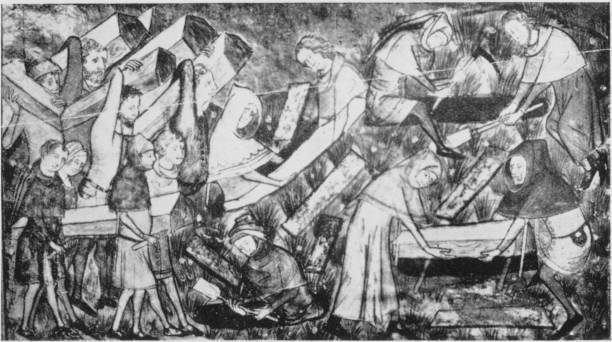
Table of Contents
Introduction
A pocket full of posies
A tissue, a tissue
We all fall down.”
These lines from a famous nursery rhyme may seem innocent, but they represent one of the darkest moments in history – the Black Death, a deadly plague that ravaged Europe in the 14th century. The apple-sized swellings, filled with blood, mentioned in the rhyme, symbolize the gruesome symptoms of the disease. This article explores the history of the Black Death and its modern-day manifestation in the Oregon bubonic plague.
Black death/Bubonic plague
The bubonic plague is a highly contagious disease caused by the bacterium Yersinia pestis. It is transmitted to humans through infected fleas that live on rodents. The disease can be passed from human to human through contact or the air, leading to flu-like symptoms such as high fever and swollen lymph nodes, known as buboes.
Symptoms of Bubonic Plague:
- Fever
- Nausea
- Seizures
- Diarrhea
- General weakness
- Vomiting sensation
- Frequent headaches
- Breathing problems
- Swelling in the joints
- Muscle and joint pains
- Abdominal pain
- Severe cough with chest pain
History of Bubonic Plague
The black plague, also known as the bubonic plague, decimated one-third of the European population in the 14th century. It is believed to have originated in Asia over 2,000 years ago, but recent research suggests that the pathogen responsible for the Black Death may have existed in Europe as early as 3000 B.C. The lack of scientific knowledge in the early days led people to believe that the plague was a punishment from God.
Oregon Bubonic Plague Outbreak:
In 2024, the bubonic plague made headlines once again, with cases reported in Oregon, United States. It is believed that the disease was transmitted to an individual through a pet cat that had hunted infected rodents. This serves as a reminder that the bubonic plague is still a threat in modern times.
Treatment Options:
The bubonic plague can be treated if detected early. Healthcare providers recommend blood or tissue sample tests to confirm the presence of the Y. pestis bacterium. Antibiotics such as Ciprofloxacin, Levofloxacin, Moxifloxacin, and Gentamicin are commonly used to treat the disease. In some cases, patients may need to be isolated to prevent the spread of the infection.
Can bubonic plague be treated?
Yes, bubonic plague can be treated if detected early.
Conclusion:
The Black Death, also known as the bubonic plague, remains one of the deadliest diseases in history. While advances in science and medicine have helped to control the spread of the plague, recent outbreaks serve as a stark reminder of its continued presence. With early detection and appropriate treatment, we can effectively combat the bubonic plague and prevent its devastating consequences.